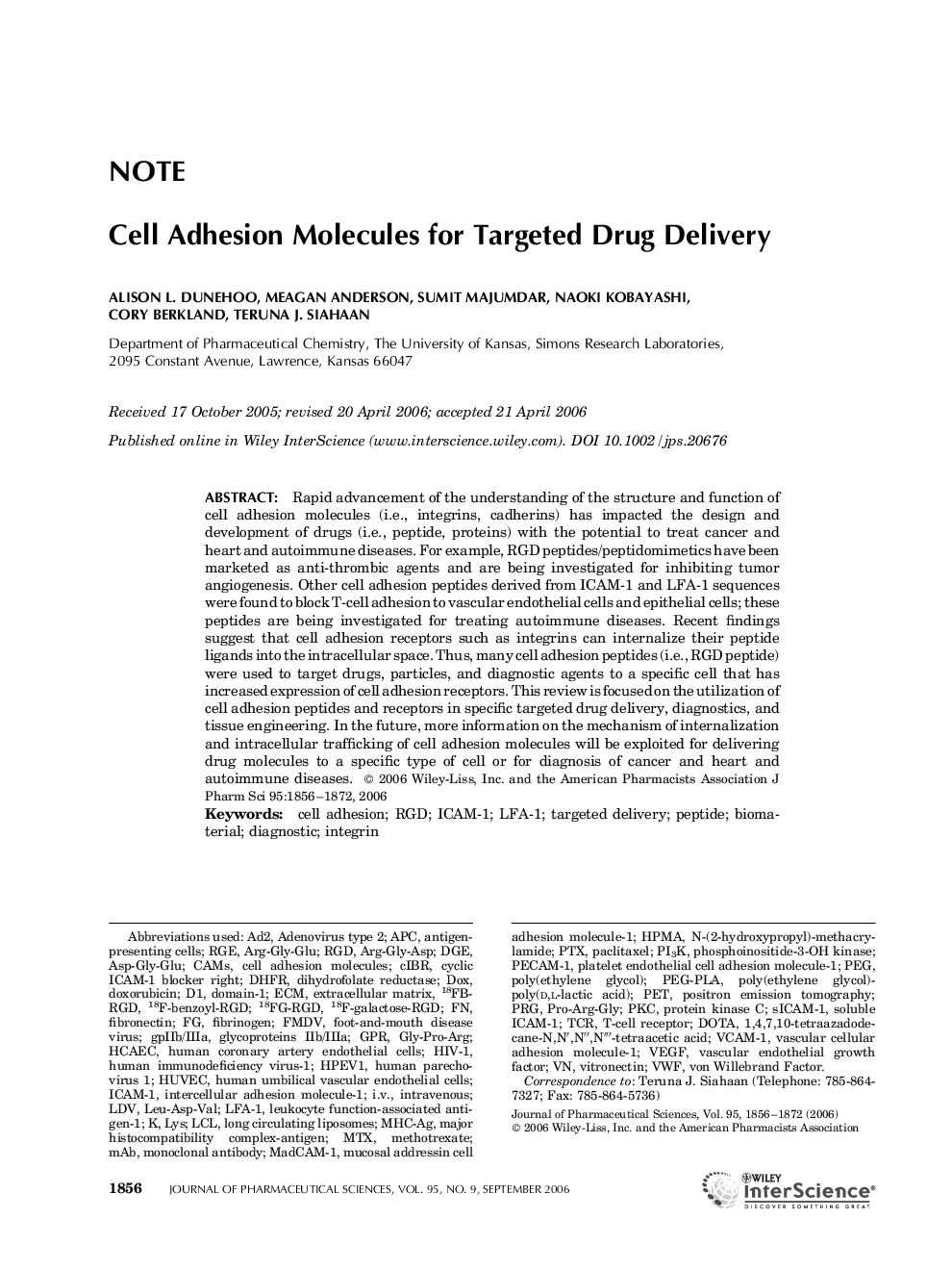| Article ID | Journal | Published Year | Pages | File Type |
|---|---|---|---|---|
| 2488047 | Journal of Pharmaceutical Sciences | 2006 | 17 Pages |
Abstract
Rapid advancement of the understanding of the structure and function of cell adhesion molecules (i.e., integrins, cadherins) has impacted the design and development of drugs (i.e., peptide, proteins) with the potential to treat cancer and heart and autoimmune diseases. For example, RGD peptides/peptidomimetics have been marketed as anti-thrombic agents and are being investigated for inhibiting tumor angiogenesis. Other cell adhesion peptides derived from ICAM-1 and LFA-1 sequences were found to block T-cell adhesion to vascular endothelial cells and epithelial cells; these peptides are being investigated for treating autoimmune diseases. Recent findings suggest that cell adhesion receptors such as integrins can internalize their peptide ligands into the intracellular space. Thus, many cell adhesion peptides (i.e., RGD peptide) were used to target drugs, particles, and diagnostic agents to a specific cell that has increased expression of cell adhesion receptors. This review is focused on the utilization of cell adhesion peptides and receptors in specific targeted drug delivery, diagnostics, and tissue engineering. In the future, more information on the mechanism of internalization and intracellular trafficking of cell adhesion molecules will be exploited for delivering drug molecules to a specific type of cell or for diagnosis of cancer and heart and autoimmune diseases.
Keywords
MAdCAM-1, mucosal addressin cell adhesion molecule-1PECAM-1, platelet endothelial cell adhesion molecule-1RGDLFA-1, leukocyte function-associated antigen-1HUVEC, human umbilical vascular endothelial cellsICAM-1LFA-1HCAEC, human coronary artery endothelial cellsAPC, antigen-presenting cellsCAMs, cell adhesion moleculesDHFR, dihydrofolate reductaseFg, FibrinogenFMDV, foot-and-mouth disease virusFN, fibronectinHIV-1, human immunodeficiency virus-1i.v., intravenousICAM-1, Intercellular adhesion molecule-1MTX, methotrexatePEG, poly(ethylene glycol)PKC, protein kinase CPTX, paclitaxelRGD, Arg-Gly-AspTCR, T-cell receptorVn, vitronectinIntegrinBiomaterialTargeted deliveryDiagnosticPET, positron emission tomographyDOX, doxorubicinVEGF, vascular endothelial growth factormAb, Monoclonal antibodyPeptideCell adhesion
Related Topics
Health Sciences
Pharmacology, Toxicology and Pharmaceutical Science
Drug Discovery
Authors
Alison L. Dunehoo, Meagan Anderson, Sumit Majumdar, Naoki Kobayashi, Cory Berkland, Teruna J. Siahaan,
